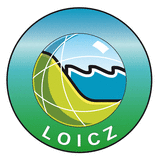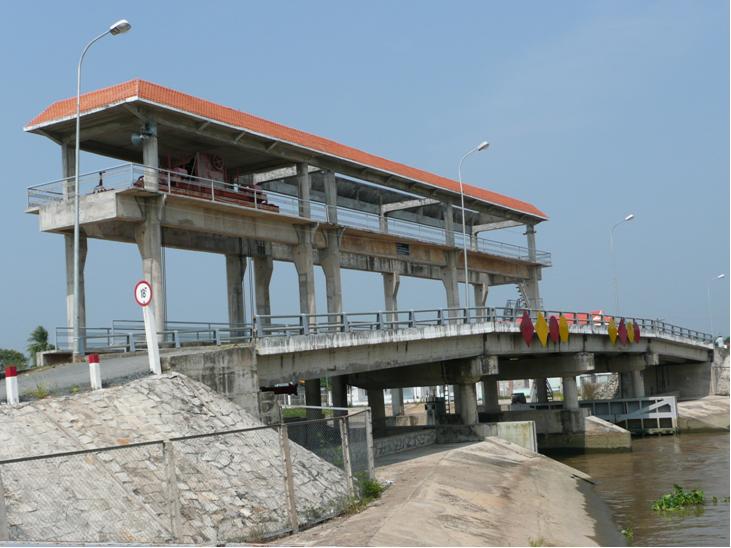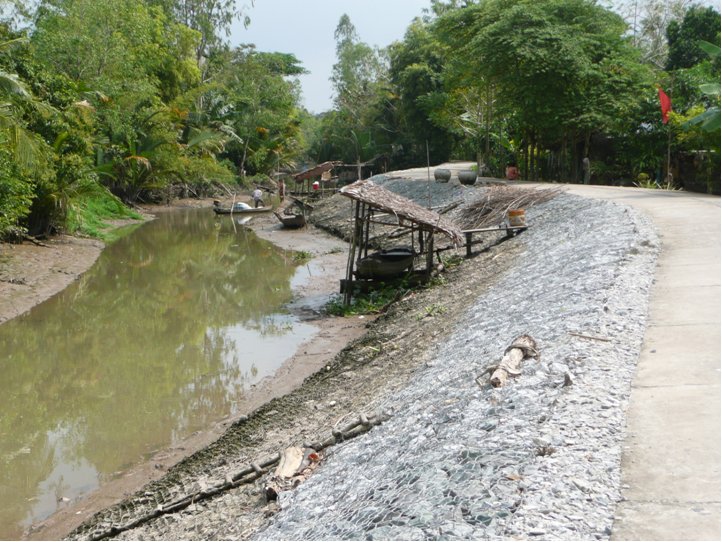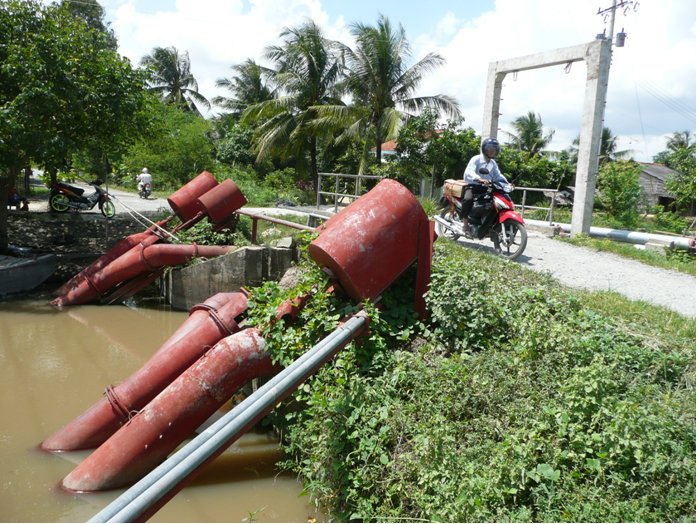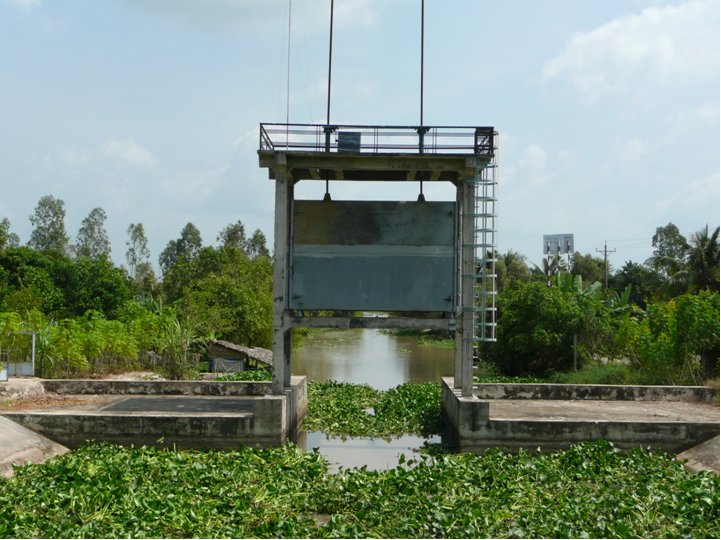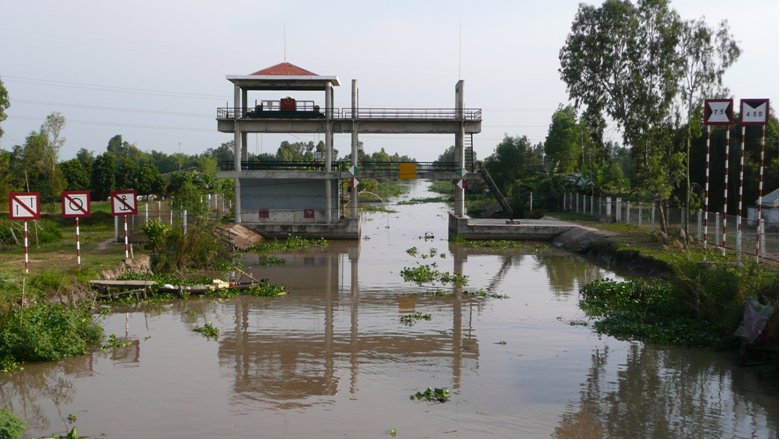Hydraulic engineering and strategic group formation in Vietnam and the Mekong Delta
The whole of Vietnam is shaped by vast deltas and big rivers and water management has always played a crucial role in the economic and social life of Vietnamese people. Moreover, the economy of irrigated rice production, which emerged in the Red River Delta many centuries ago, constitutes an essential part of Vietnamese civilization and history (văn minh lúa nước).
The whole of Vietnam is shaped by vast deltas and big rivers and water management has always played a crucial role in the economic and social life of Vietnamese people. Moreover, the economy of irrigated rice production, which emerged in the Red River Delta many centuries ago, constitutes an essential part of Vietnamese civilization and history (văn minh lúa nước). Practices, scales and responsibilities with regard to water management have however changed over time.
Before concepts of the global water discourse reached Vietnam against the backdrop of international integration and increased donor engagement by the end of 1990s (e.g., river basin management or IWRM), the Vietnamese understanding of water resources management was reduced to the idea of bringing water under human control, in particular for the use of agricultural production. The Vietnamese terminology for water resources management reflects this perception: “thủy lợi”, a Sino-Vietnamese word, is combined of the Chinese word water (thủy) and the Vietnamese word useful or beneficial (lợi), and literally means ‘water resources exploitation’, referring to human activities in hydraulic engineering. “Thủy lợi” is to date the predominant expression in use for water resources management related activities, as various examples listed in Box 1 illustrate.
| Box 1: Vietnamese terminology on water resources with reference to hydraulic engineering (thủy lợi) | |
| Quản lý thủy lợi | Water resources management |
| Quy hoạch thủy lợi | Water resources planning |
| Công trình thủy lợi | Irrigation work/hydraulic work (dykes, canals, pumping stations, sluices, reservoirs, etc) |
| Bộ thủy lợi | Ministry of Water (in charge of water resources management until 1995, when it was merged into the Ministry of Agriculture and Rural Development) |
| Xây dựng thủy lợi | Hydraulic construction |
| Khoa học thủy lợi | Water resources research |
Since 1995, the Ministry of Agriculture and Rural Development (MARD) with its subordinate state management organization and planning institutes is in charge of hydraulic engineering. This includes the responsibility for planning, construction and maintenance of all kind of hydraulic works, such as dykes, irrigation schemes, sluices, reservoirs and pumping stations. Furthermore, hydro-power and large-scale dams in mountainous areas fall under the ministry’s mandate. The main objective of the expansion and maintenance of hydraulic infrastructure is to boost agricultural production, which is still a top priority of the central regime. Therefore, vast investment efforts have been made by the Vietnamese government during the past decade. As figure 1 shows, investments into hydraulic engineering in the years 2000-2010 represented up to 74 percent of MARD’s annual budget for investment projects.
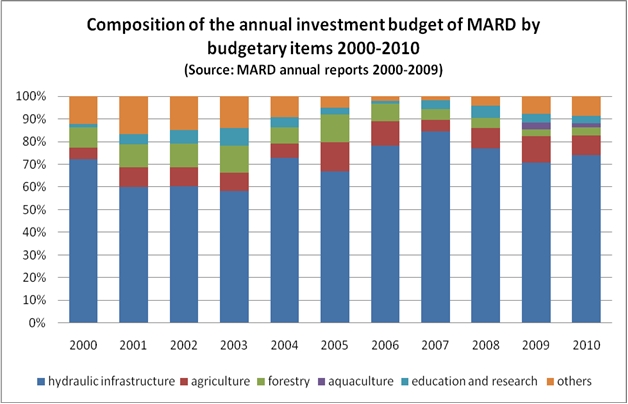
Figure 1: Annual investment of MARD 2000-2010
Funding sources include ODA, revenues from the sale of government bonds and allocations from the national state budget. In the period from 2000-2010 the Vietnamese government invested not less than a total of 2.8 billion USD into the preservation and construction of hydraulic infrastructure (including hydropower plants) and, according to the next 5 year plan, investment is expected even to grow. A large share of these funds is channeled into the hydraulic construction business. The business landscape in this field is composed of both, (equitized) state owned enterprises (focusing on the construction of large scale hydraulic schemes) and private companies. Due to market liberalization and privatization in the context of Vietnam’s renovation policy, private businesses are increasingly benefiting from these huge investment funds.
The Mekong Delta, located in the South of Vietnam, is of great importance for the national food security and produces a large part of the country’s agricultural export products. The recent success story of developing the delta into Vietnam’s largest rice bowl in only 3 decades is closely linked to technical and scientific innovations in water resources exploitation and hydraulic engineering. Progress made in salinity intrusion control, irrigation and drainage as well as flood control have contributed significantly to the delta’s agro-economic upswing. After the end of the Second Indochinese war and the subsequent reunification of Northern and Southern Vietnam under the socialist regime, the government increased its efforts to effectively tap the delta’s water resources. In order to ensure the availability of freshwater for irrigation and promote agricultural growth, the delta’s hydraulic infrastructure was continuously expanded. New canals were dug, dykes were built or upgraded and sluices installed (see the photo gallery below). As a result, agricultural output, in particular rice, has continuously increased to date.
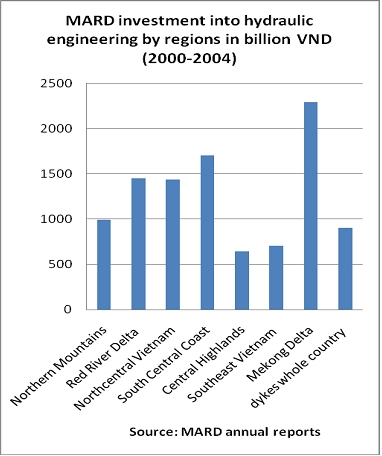
Figure 2: MARD investments by regions
Under the supervision and guidance of the Ministry of Water (Bộ Thủy lợi) and its sub-departments the state began to systematically plan water resources development according to the different hydrological and ecological areas of the delta. State planning on water resources development and hydraulic engineering reached a first peak with the compilation of the NEDECO Master Plan in the 1990s. This planning document still constitutes an important framework for water resources planning and many schemes currently under construction refer to it.
However, certain changes can be observed: Previously, hydraulic engineering focused on single constructions such as canals, dykes and pumping stations, but during the last 15 years large-scale approaches have been favoured. Nowadays water resources development takes place at a more regional level, which means that large-scale irrigation and drainage schemes are developed and combined with road infrastructure projects, including dykes sluices (e.g. Nam Măng Thít, Ô Môn – Xà No, Bắc Vàm Nao, Quản Lộ - Phụng Hiệp). Moreover, water resources development has become more divers recently, embedding water utilization for aquaculture development and industrialization into planning processes.
The apparent abundance of financial resources spent on hydraulic engineering as well as the dynamic transformation of hydraulic bureaucratic institutions at different government levels (“hydrocracy”) make the whole sector an interesting case study for analyzing strategic group evolution in water resources management in Vietnam. Preliminary findings from the field indicate that the currently evolving private hydraulic construction business is to a high degree dominated by (former) state cadres, including both cadres from state agencies as well as state-owned enterprises, who increasingly turn their strategic action towards private sector development for resources appropriation. Moreover, despite of recent market liberalization, state-owned enterprises still keep their dominant position in the hydraulic engineering sector and apparently have benefited from the government’s equitization policy on state-owned enterprises (1) in many ways. The water sector therefore offers an interesting field for investigating the impact of market liberalization, administrative reforms and globalization on power relations and social structures in the South of Vietnam.
First conceptual considerations as well as preliminary findings from the (still ongoing) field research are available in the following publications:
link to www.water-alternatives.org
ZEF Working Paper 35
(1) “Equitization” is the Vietnamese way of privatizing state-owned enterprises by transforming them into joint-stock companies.
Hydraulic works in the Mekong Delta – Impressions
|
|
|
|
|
|
|
|
|
|
Simon Benedikter




